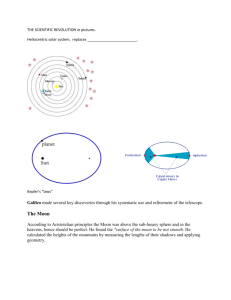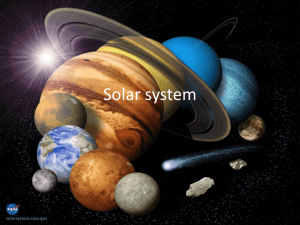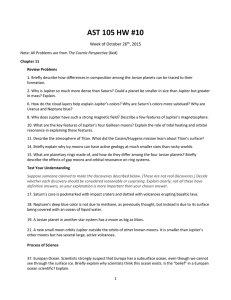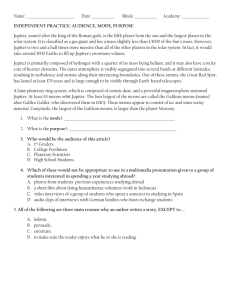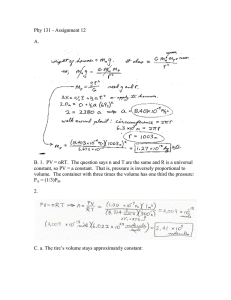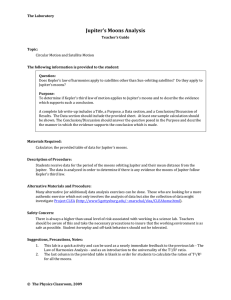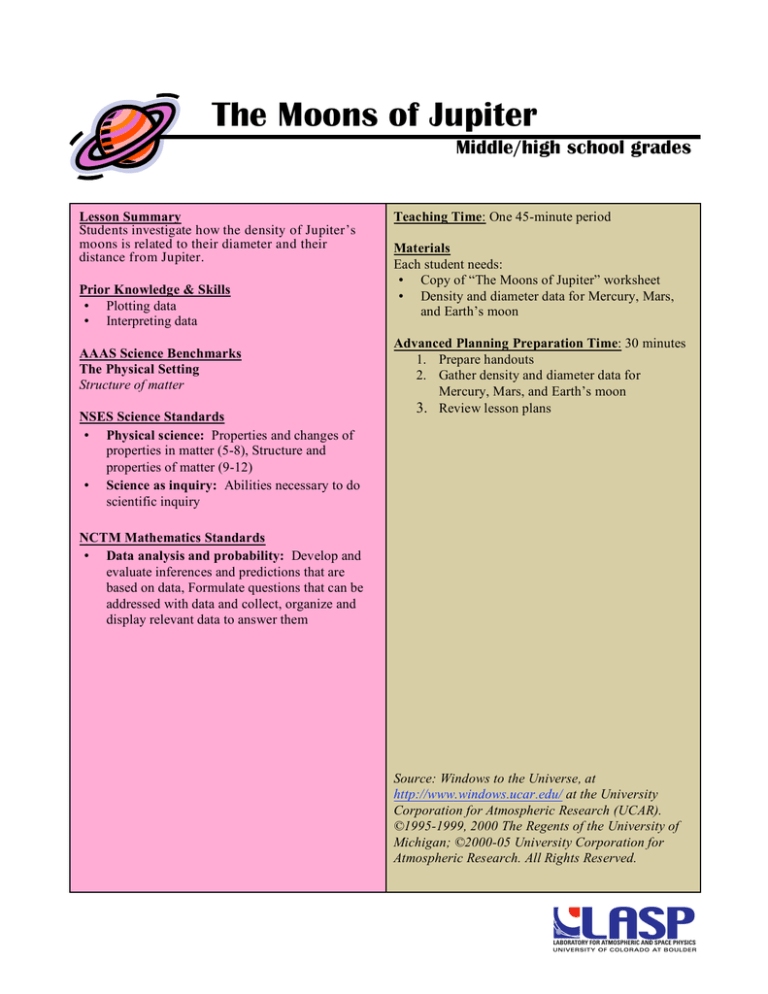
The Moons of Jupiter
Middle/high school grades
Lesson Summary
Students investigate how the density of Jupiter’s
moons is related to their diameter and their
distance from Jupiter.
Prior Knowledge & Skills
• Plotting data
• Interpreting data
AAAS Science Benchmarks
The Physical Setting
Structure of matter
NSES Science Standards
• Physical science: Properties and changes of
properties in matter (5-8), Structure and
properties of matter (9-12)
• Science as inquiry: Abilities necessary to do
scientific inquiry
Teaching Time: One 45-minute period
Materials
Each student needs:
• Copy of “The Moons of Jupiter” worksheet
• Density and diameter data for Mercury, Mars,
and Earth’s moon
Advanced Planning Preparation Time: 30 minutes
1. Prepare handouts
2. Gather density and diameter data for Mercury, Mars, and Earth’s moon
3. Review lesson plans
NCTM Mathematics Standards
• Data analysis and probability: Develop and
evaluate inferences and predictions that are
based on data, Formulate questions that can be
addressed with data and collect, organize and
display relevant data to answer them
Source: Windows to the Universe, at
http://www.windows.ucar.edu/ at the University
Corporation for Atmospheric Research (UCAR).
©1995-1999, 2000 The Regents of the University of
Michigan; ©2000-05 University Corporation for
Atmospheric Research. All Rights Reserved.
The Moons of Jupiter
More than 60 moons have been found at Jupiter. The four largest were
discovered by Galileo himself in the year 1610! That's why they're called "The
Galilean Satellites." There are four smaller satellites in near-circular orbits that
are closer to Jupiter than the innermost Galilean Satellite (Io, see below):
Amalthea (discovered in 1892) and 3 others (discovered in 1979). The remaining
satellites have elliptical orbits and are found far beyond Callisto. And, if that isn't
enough, the Voyager mission also discovered a RING around Jupiter!!
Using the data below and the information on the worksheet, plot the density
versus diameter of Mercury, Mars, Earth’s moon and the Galilean satellites on
the chart provided.
Planet
Diameter
Density
Mercury
4,879 km
5.42 g/cm^3
Mars
6,794 km
3.94 g/cm^3
Earth’s Moon
3,475 km
5.52 g/cm^3
How do the Galilean satellites compare to these bodies in terms of size?
_______________________________________________________________
_______________________________________________________________
Based on density, can you guess anything about the composition of Jupiter's
moons?
_______________________________________________________________
_______________________________________________________________
Based on density, can you guess anything about the other bodies? For example,
why is Mercury so much denser than Mars?
_______________________________________________________________
______________________________________________________________
Do you see any trends that correspond to distance from Jupiter?
_______________________________________________________________
_______________________________________________________________
_______________________________________________________________
_______________________________________________________________
_______________________________________________________________
The source of this material is Windows to the Universe, at
http://www.windows.ucar.edu/ at the University Corporation for Atmospheric
Research (UCAR). ©1995-1999, 2000 The Regents of the University of Michigan;
©2000-05 University Corporation for Atmospheric Research. All Rights Reserved.

